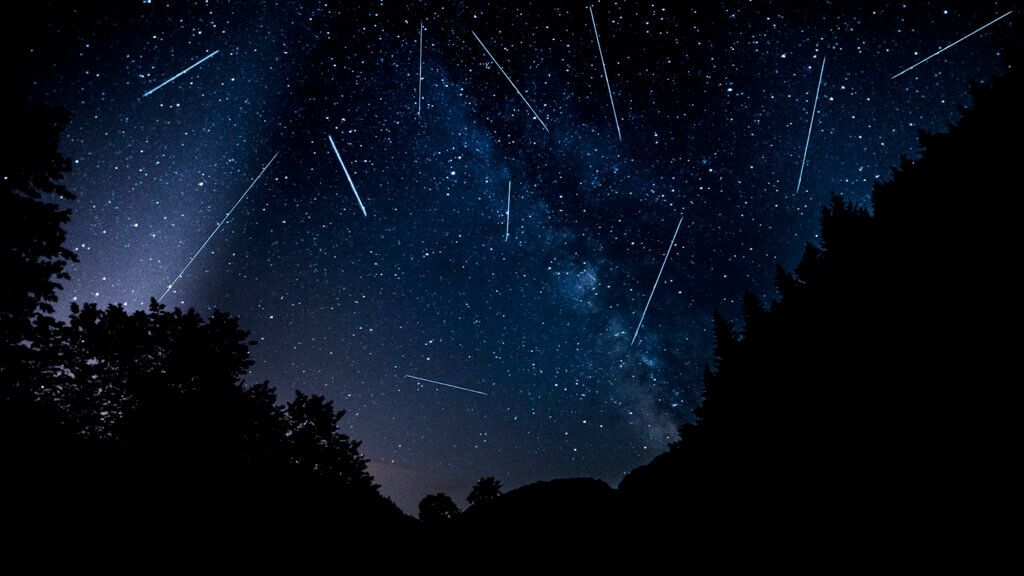August 2024 Night Sky Events: Perseids Meteor Shower, Super Blue Moon, and Planetary Conjunctions

August brings the return of dark skies to the northern hemisphere, making stargazing easier and more enjoyable. This month offers several exciting celestial events, including the Perseid meteor shower, a conjunction of Mars and Jupiter, and a super blue moon.
Crescent Moon and Earthshine
- When: Just after sunset, Monday, August 5 through Thursday, August 8
- Where: Western sky
Enjoy the crescent moon hanging low in the west during twilight. Look closely with binoculars to see the “dark side” of the moon illuminated by “Earthshine,” sunlight reflecting off Earth’s oceans and back onto the moon.
Peak of the Perseid Meteor Shower
- When: Monday-Tuesday, August 11-12
- Where: All sky
The Perseid meteor shower will peak with about 60 shooting stars per hour overnight on August 11-12. With the moon setting before midnight, the best viewing will be around 1:00 a.m. local time, as the constellation Perseus rises high into the sky.
Jupiter and Mars in Conjunction
- When: Before sunrise on Thursday, August 15
- Where: Eastern sky
Look to the east early on August 15 to see Jupiter and Mars appear very close together, just 20 arcminutes apart. This will be a great sight for the naked eye, binoculars, and telescopes, although Jupiter will be about 20 times brighter than Mars.
Super Blue Sturgeon Moon
- When: Moonrise on Monday, August 19
- Where: Rising in the east
This month’s full moon is the first of four supermoons in 2024. It will be closer to Earth and also notable for being a “blue moon,” the third of four full moons in one astronomical season.
Moon and Saturn in Conjunction
- When: After dark on Tuesday, August 20
- Where: Eastern sky
Saturn will shine next to the moon tonight, appearing brighter as it approaches its annual opposition next month.
Last Quarter Moon and the Pleiades
- When: Early hours of Monday, August 26
- Where: Eastern sky
A half-moon will rise with the Pleiades star cluster after midnight, providing a spectacular sight with the naked eye and binoculars.
